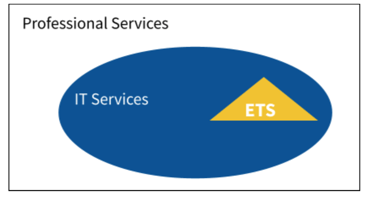Since we posted our first blog introducing Vixul , we have received several comments and questions...
The 4 Stages of Evolution of a Metrics-Driven Sales Pipeline

If you’re building a differentiated technology services company, you will find KPIs for a sales pipeline are useful for operationalizing your business. We’ve already discussed critical KPIs we monitored at Flux7 to ensure our pipeline health. But that list was not created overnight. It was a result of a long journey filled with many mistakes. In this article, we’re sharing that journey & its insights with you. We hope our journey helps you in avoiding our mistakes and gives you confidence in your own abilities.

Stage 1: Brownian Motion
Companies in this stage tend to be young, with founders just getting started on their journey and a focus on smaller projects. This makes them vulnerable to extreme fluctuations in business, although mitigated by quick time to close.
Flux7 started with Aater applying for projects on Upwork, then called oDesk. We didn’t need a pipeline, nor did we have a CRM or any other analytics. We had no credibility, no network, no understanding of how consulting works, and we weren’t even operating in our area of expertise.
But for where we were at the time, it was the right decision. We could not be analytical about building our business because we didn’t know what business we were in. We would frequently joke about our lack of strategy as Brownian Motion.
 Without any foundation tethering us, our strategy was more resembling of a random walk like a particle in Brownian Motion. // Image courtesy Wikipedia
Without any foundation tethering us, our strategy was more resembling of a random walk like a particle in Brownian Motion. // Image courtesy WikipediaCompany State:
-
Ad-hoc quick-to-close revenue.
-
Extreme fluctuations in business, although mitigated by quick time to close.
-
Low gross margins and unstable revenue, but we didn’t have the financial maturity to understand how we were performing.
How to Evolve:
-
Start learning about accrual accounting to get a proper understanding of finances.
-
Sharpen company focus. For us, that meant focusing on cloud and DevOps.
Stage 2: Headcount Growth
These companies have caught a break, and things are taking off. For many tech service companies, this automatically means expanding their headcount. Growth may not be strategic yet, but it’s here and it’s happening.
In 2015, enterprises started moving to the cloud. And at Flux7 we were ready to take advantage of the shift. Our success got us more attention from AWS and more business in return. We believed that, for some reason, growth just happens because that’s what was happening to us. We forecasted needs according to aspirational targets, matching delivery capacity to anticipated growth.
In November 2016, Aater and I parked ourselves in a coffee shop, got our drinks, pulled out the delivery capacity spreadsheet, and started planning the rest of the company. For the first time, we started understanding the cost of growth and the constraints it imposes on us.

Company State:
-
Narrowed down to a fast-growing niche
-
Growing with the market
-
Fortunate to be in the right area but not yet aware that proper systems are needed for intentional growth
How to Evolve:
-
Create annual revenue targets and appropriate hiring plans
-
Modulate growth targets with an understanding of the cost of growth
Stage 3: Planning Meeting Reality
It may have been smooth sailing in Stage 2, but now it’s time to get ready for the storm. Stage 3 is when ideas receive a reality check. How a company responds to this challenge will determine whether it sinks or survives.
At Flux7, growth drastically slowed down in 2017. By creating our targets and planning to reach them, we started our journey to become intentional entrepreneurs. But there was a critical flaw. We were modeling the company around the headcount. This approach divorced us from the reality of the situation, which is that hiring a person is not the same as solving a problem. We lacked proper strategic planning. We had targets but failed to create intermediate goals and plans to reach the targets.
So, how did we survive? We spent the year looking inward at the business. We upskilled ourselves as leaders. We reformed our leadership with a mix of internal team members and new hires we brought into leadership roles. We implemented OKRs. We extended our models to include pipeline targets. We started talking more about our booking targets. We created company-wide bonuses for hitting our bookings goals. We built account management to start generating recurring revenue. In the end, we got ourselves back on track.

Company State:
-
The fairytale’s over, but there’s still a chance to build a happy ending
-
Acknowledging, coping, and adapting to reality
-
Realizing the organization needs to scale beyond co-founders. In particular, we knew sales at Flux7 especially had to scale beyond the co-founders
How to Evolve:
-
Add sales and pipeline information to your business model
-
Reconcile your business model with reality
-
Implement OKRs to rally the troops around organizational goals
Stage 4: Shift Left
These companies are mature enough to have weathered the worst of the storm, but they know better than to get comfortable now. Having seen the risks of unplanned growth and strategic shortsightedness, they are ready to invest further in being strategic & intentional.
At Flux7, as we got our growth back on track, we still had uncertainty from bumpy pipelines. Our average utilization was below 70%. Our bill rate was very high, so we could absorb the hit. But this drove us to shift our planning further left. That way, we could see if we were headed towards a disaster and take steps to correct that. We strengthened our forecasts using the metrics in this article.
We also correctly integrated forecasts into our plan, considering the learnings we shared in this article. We could anticipate the bookings for the next two quarters and generate the lead funnel beyond that. By implementing these fixes, we could poise ourselves to consolidate wins without being blindsided by failures.

Company State:
-
A leadership team that is finding its groove, and the company is starting to execute.
-
Still has ambitious growth targets
-
The company is taking ownership of its lead funnel, diversifying lead sources, and building it to meet future needs.
How to Evolve:
-
Be proactive about lead generation.
-
Develop a deeper understanding of backlog and model in-quarter and future business.
-
Measure lead sources, including repeat business, separately to develop each channel.
-
Develop forecasts more than two quarters out, giving you time to take proactive steps to achieve the desired outcome.
Wrapping Up
We shared this journey so you can understand that it is a difficult journey, and not necessarily in the ways you may be focused on right now. In tech services, sometimes success can be easy - surviving your own success, not so much.
These topics are often overwhelming, but that’s why we always remind you to try what you can start today. This article is to show that you need to start working on implementing planning today. You will have a lot of assumptions and simplifications. It is okay to have those as long as you begin taking a more intentional approach today. It takes time to build and grow a company.
This is also why in the Vixul accelerator, we keep the boot camp short but continue to advise your team through its journey. If you’re interested in learning more about the Vixul accelerator program, please contact us on LinkedIn or apply for the a24–2 cohort.




